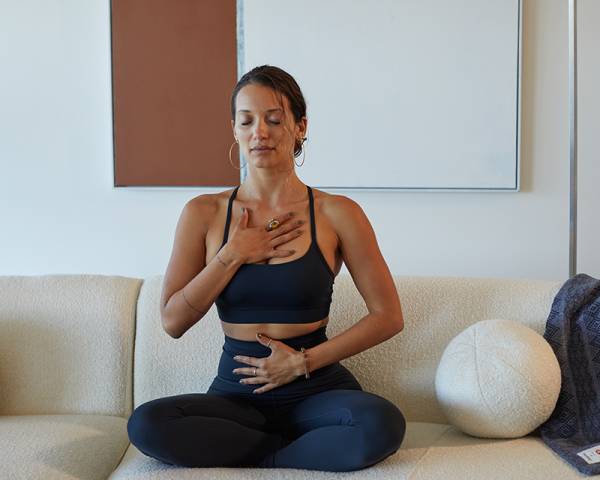Find Your Meditation Seat
A guest article by greenyogashop ambassador Ines
Finding the right sitting position for meditation is not so easy. Anyone who has ever meditated may already have experienced the phenomenon of limbs falling asleep or becoming numb and/or joints starting to ache. This can make five minutes feel like an eternity!
However, if your thoughts only revolve around the twinge in your leg or the tingling in your left foot, the "goal" of finding inner peace and the connection to yourself becomes too far to reach. In order to give your mind the space it needs, you need a calm and relaxed environment, comfortable and warm clothing and a sitting position that you can comfortably endure for the duration of the meditation.
When choosing your sitting position, I would like to advise you that there is probably not one correct position that you can adapt every day. Our bodies are a little different every day, and our minds and emotions are constantly changing. The best thing to do is to take a few moments before your meditation practice to check in with yourself and see what you feel like doing today. The outer form is less important. What is important is how you feel, how your posture can support your physical, mental and emotional conditions, allowing you to fully engage in your meditation practice.
Keep in mind that the positions I am showing you are choices. You may find that none of these postures suit you. That is perfectly OK. Try it out, use tools, and you will see that with patience, respect, compassion and perseverance, you will find your own perfect meditation sitting position.
Sitting Meditation Positions (especially suitable for beginners)
In sitting positions it is important that your (lower) back can remain straight and that your abdomen can remain soft, so that you can breathe freely and relaxed. Choose a posture in which you can sit comfortably, upright and pain-free.
Possible aids for an upright and supported meditation posture: Meditation cushions, Yoga Blocks, blanket. If you don't have yoga and meditation accessories, a cushion, blanket, towel or books will do.
01 Sukhasana – Tailor Seat
Sukhasana (Sukha = joy, pleasant, light and Asana = here: Sitting postur), the sitting posture with crossed legs, the Tailor Seat, is also described as a light and comfortable posture, which is often chosen at the beginning of a meditation practice.
• Sit with your legs stretched out on a cushion, a block or a rolled blanket.
• Feel your sit bones on the floor.
• Now cross your legs so that your left foot supports your right leg/knee and vice versa. You are free to choose which leg is in front and which is behind. Feel free to change the cross of the legs from meditation to meditation to create a balance.
• Keep your knees relaxed and lowered towards the floor. Use the block if your knees do not touch the floor.
• Tilt your pelvis slightly forward so that your sit bones can ground more and your spine finds its way into alignment.
• Keep your belly soft, so that your breath can flow freely and calmly.
• Place your hands loosely on your thighs or knees.
• Relax your shoulders and gently pull your chin to your chest, giving your neck more length and space.
• Let go of your jaw, release your tongue from the roof of your mouth, relax the muscles around your eyes and forehead.
• Gently close your eyes and start with your meditation.
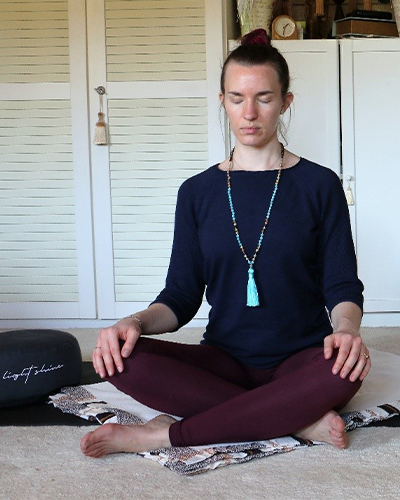
02 Muktasana – The Comfortable/Exposed Sitting Posture
In der Haltung Muktasana (Mukta = liberated I Asana = here: Sitting posture) is called a liberated sitting posture because, in contrast to Sukhasana or Lotus Seat, the legs are not on top, but in front of each other.
• Sit with your legs stretched out on a cushion, a block or a rolled blanket.
• Feel your sit bones on the floor.
• Pull one heel to your perineum and place the other foot in front of it. Only go as far as you feel no pain.
• Keep your knees relaxed and lowered to the floor. Feel free to use block if your knees do not touch the floor.
• Tilt your pelvis slightly forward so that your sit bones can ground more and your spine finds its way into alignment.
• Keep your belly soft, so that your breath can flow freely and calmly.
• Place your hands loosely on your thighs or knees.
• Relax your shoulders and gently pull your chin to your chest, giving your neck more length and space.
• Let go of your jaw, release your tongue from the roof of your mouth, relax the muscles around your eyes and forehead.
• Gently close your eyes and start with your meditation.
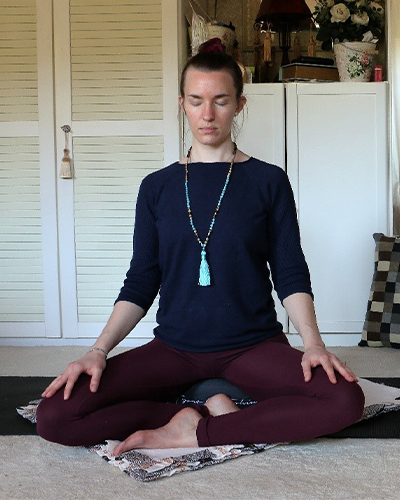
03 Vajrasana – Heel Sit
Vajrasana (Vajra = diamond, thunderbolt, the solid/powerful), also called heel seat or diamond seat, is a sitting posture suitable for beginners. It allows a particularly easy and stable straightening of the back. However, it will put your knees under some strain. Place a meditation cushion, a block or a bolster under your buttocks to reduce the pressure on your knees.
• Sit on your heels or on your supporting tool. Keep your legs bent and parallel with your knees pointing to the front.
• Straighten your spine and give it maximum length.
• Tilt your pelvis slightly forward so that your sit bones can ground more and your spine finds its way into alignment.
• Keep your belly soft, so that your breath can flow freely and calmly.
• Place your hands loosely on your thighs or knees.
• Relax your shoulders and gently pull your chin to your chest, giving your neck more length and space.
• Let go of your jaw, release your tongue from the roof of your mouth, relax the muscles around your eyes and forehead.
• Gently close your eyes and start with your meditation.
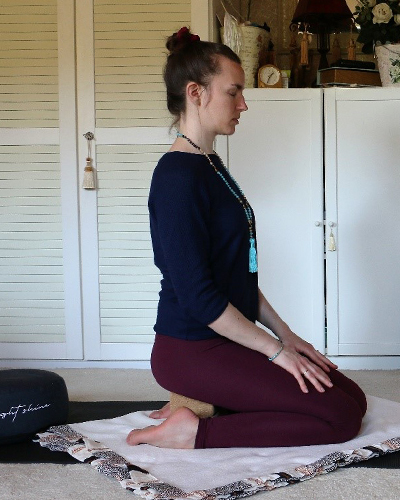
Additional tip for beginners: It is perfectly okay to briefly stretch out your legs in between, to change positions or to stretch your back. With more practice, it will become easier, and you will be able to comfortably hold your seat without distraction much longer.
Note: If you suffer from physical limitations or experience permanent (stabbing) pain in postures, please contact your doctor or physiotherapist and discuss the possibilities for your practice with them in advance!
Practice patience, compassion, respect and perseverance
Despite its healing and calming effects, meditation also challenges people. So if you decide to take the path of meditation, or at least incorporate it into your daily life from time to time, practice patience, compassion, respect and perseverance. Listen to the signals of your body, mind and emotions and gradually experience the healing effects of meditation.
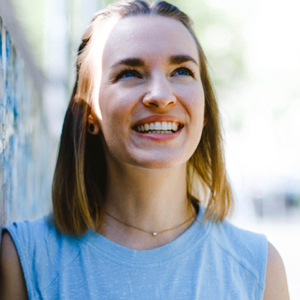
greenyogashop ambassador
ines
Ines is a trained Vinyasa yoga teacher living in Berlin. She is passionate about enabling people to find their very own approach to Yoga. For Ines, Yoga describes a journey to yourself that goes hand in hand with mindfulness and respect for yourself and the environment. She wants to show how multifaceted Yoga is and how it fits into everyone's everyday life.

